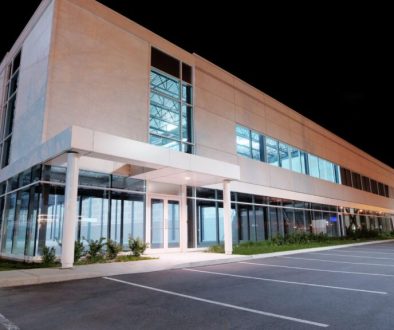How Lease Term Length Impacts Property Value
The duration of a lease can significantly affect property value. This article explores how lease term length impacts various aspects of real estate investment.
How Lease Term Length Impacts Property Value
Understanding the dynamics of lease term lengths is vital for both landlords and investors. Lease terms can vary from short-term leases of a few months to long-term commitments spanning several years. This variability can affect property value, rental income stability, tenant quality, and overall investment risk. In this post, we will explore how different lease lengths influence property valuations, the perspectives from both landlords and tenants, and best practices for navigating these complexities in the real estate market.
Introduction
In the world of real estate, the length of a lease is a crucial aspect that can influence the overall value of a property. For landlords, longer leases may provide stability and predictability in income, while shorter leases may attract more transient tenants, potentially impacting occupancy rates and overall property appeal. Understanding the implications of lease term lengths is essential for making informed investment decisions. This article will delve into how lease term length affects property value, the interests of both landlords and tenants, and strategies for optimizing lease agreements.
Impact of Lease Length on Property Value
- Longer leases typically enhance property value due to predictable income streams.
- Properties with short-term leases may be valued lower due to perceived volatility in income.
- Valuation methods often consider lease length as part of the calculation for future cash flow projections.
Longer lease terms are often viewed favorably by investors because they provide consistent cash flow and reduce vacancy risk. For example, a retail property leased to a well-known brand on a 10-year lease will likely hold a higher value than a similar property rented on a month-to-month basis. This stability is appealing to potential buyers and can drive up the property’s market value.
Conversely, properties with shorter leases might see a decrease in value due to the uncertainty surrounding tenant turnover, which can lead to higher costs associated with vacancy and tenant acquisition. Investors might be wary of properties that do not guarantee long-term occupancy, prompting them to offer lower prices. In essence, lease length directly correlates with the perceived risk and reward associated with a property investment.
Tenant Perspectives: Preferences for Lease Lengths
Tenants also have their preferences regarding lease lengths, which can further influence property markets. Many businesses opt for shorter leases to maintain flexibility, particularly startups or those in volatile industries. This desire for flexibility may lead landlords to negotiate lease terms that align with tenant needs, impacting property attractiveness and overall demand.
Additionally, tenants may seek longer leases to secure favorable rental rates and stability for their operations. For instance, established businesses may prefer longer commitments to avoid frequent relocations, ensuring that they retain their customer base and minimize disruption. This dynamic can lead to a more competitive rental market, where properties with longer lease terms garner attention from serious tenants willing to commit to a stable environment.
Market Trends and Lease Lengths
Current market trends show a shift in how lease lengths are perceived, particularly in the context of economic fluctuations. During uncertain economic times, landlords may find themselves more flexible in lease negotiations, offering shorter terms to attract tenants who might be hesitant to commit long-term. Conversely, in a booming economy, longer lease terms may become more desirable, with tenants eager to lock in favorable rates before prices rise.
Moreover, specific industries may influence these trends. For instance, the retail sector has seen an increase in short-term leasing due to the rise of e-commerce, compelling traditional retailers to reconsider their real estate strategies. This shift has created opportunities for landlords to cater to a range of tenants with varying lease length preferences, thus impacting property values based on demand fluctuations.
Lease Length and Investment Risk
Investment risk is inherently tied to lease length. Properties with long-term leases generally exhibit lower risk due to the assurance of steady income, making them attractive to risk-averse investors. On the other hand, properties with short-term leases may pose greater risks as they are subject to higher turnover rates, leading to increased vacancy periods and costs associated with finding new tenants.
Real estate investors often conduct thorough risk assessments when evaluating properties based on lease terms. For instance, a multifamily property with high tenant turnover might require an investor to consider the implications of short leases on cash flow and maintenance costs. In contrast, a commercial property with a longstanding tenant on a multi-year lease can often be valued at a premium due to the reliable income stream it provides.
Best Practices for Lease Negotiation
For landlords and property managers, understanding how lease term length impacts property value can guide their negotiation strategies. Here are some best practices to consider:
- Assess the market conditions: Understanding current rental trends and tenant demands can help landlords craft competitive lease agreements.
- Offer flexible lease terms: Providing options for both short and long-term leases can attract a diverse tenant base and maximize occupancy.
- Incentivize longer leases: Consider offering rental discounts or other incentives for tenants who are willing to commit to longer lease terms, enhancing property value.
Moreover, landlords should engage in open communication with prospective tenants to understand their needs better. This dialogue can lead to lease agreements that meet both parties’ interests, ultimately supporting property value retention and appreciation.
Evaluating Lease Agreements
Evaluating lease agreements requires a careful examination of the terms and conditions, particularly concerning lease length. Investors should analyze the lease’s impact on projected cash flows, tenant retention rates, and overall property management. Key factors to consider include:
- Market stability: Evaluate whether the lease terms align with current market trends and potential future fluctuations.
- Tenant performance: Review the tenant’s financial health and operational stability to gauge their ability to fulfill lease obligations.
- Exit strategies: Having a clear understanding of lease termination clauses and renewal options can help mitigate risks associated with tenant turnover.
By thoroughly assessing these aspects, investors can make informed decisions that enhance their property portfolios and mitigate risks associated with lease term lengths.
Conclusion
In conclusion, lease term length plays a pivotal role in determining property value, shaping both landlord and tenant experiences. Longer leases often translate to stability and reduced risk, while shorter leases may introduce volatility but can cater to specific tenant needs. Understanding these dynamics is essential for making informed real estate investment decisions.
Investors should remain vigilant in evaluating lease agreements, market conditions, and tenant performance to maximize property values. As trends continue to evolve in the real estate landscape, adapting strategies to align with changing tenant demands and economic conditions will be crucial for long-term success. For personalized advice and support in navigating the complexities of lease agreements and property investments, contact Tower Business Brokers today and explore how we can assist you in optimizing your real estate portfolio.



